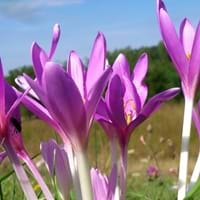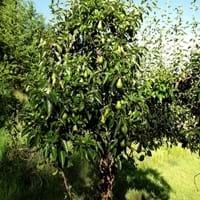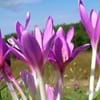Life Span
Perennial
Perennial
Type
Bulb or Corm or Tuber
Fruit
Origin
Mediterranean, Turkey
Europe, Western Asia
Types
Not available
Green Anjou, Red Anjou, Bartlett
Number of Varieties
Not Available
Habitat
Lawn, meadows, Sunny Edge, Woodland Garden
Humid climates, moist forests
USDA Hardiness Zone
6-9
3-8
Sunset Zone
21,22
2a, 2b, 3a, 3b, 4, 5, 6, 7, 8, 9, 14, 15, 16, 17, 18
Habit
Clump-Forming
Oval or Rounded
Flower Color
Fuchsia, Rose
White
Flower Color Modifier
Bicolor
Not Available
Fruit Color
Not Available
White, Yellow, Red, Green, Yellow green
Leaf Color in Spring
Green
Light Pink, Red, Green, Light Green
Leaf Color in Summer
Light Green
Dark Green
Leaf Color in Fall
Several shades of Green
Purple, Dark Green, Burgundy
Leaf Color in Winter
Light Green
Light Green
Leaf Shape
Long Broad
Oval with a pointed tip and fine teeth along their edges
Plant Season
Spring, Fall
Early Spring, Winter
Sunlight
Full Sun, Partial Sun
Full Sun
Growth Rate
Medium
Medium
Type of Soil
Loam
Loamy, Sandy
The pH of Soil
Acidic, Neutral
Acidic
Soil Drainage
Well drained
Well drained
Bloom Time
Late Summer, Early Fall
Fall, Summer
Tolerances
Drought
Drought
Where to Plant?
Container, Ground, Pot
Ground
How to Plant?
Corms or bulbs, Seedlings
Grafting, Seedlings
Plant Maintenance
Low
Low
Watering Requirements
Do Not over Water, Keep the ground moist but not water-logged
Medium, Water less during winter, Water more in summer, when new, water every week
In Summer
Lots of watering
Lots of watering
In Spring
Moderate
Moderate
In Winter
Average Water
Average Water
Soil pH
Acidic, Neutral
Not Available
Soil Type
Loam
Not Available
Soil Drainage Capacity
Well drained
Not Available
Sun Exposure
Full Sun, Partial Sun
Full Sun, Partial Sun
Pruning
Cut or pinch the stems, Remove damaged leaves, Remove dead flowers, Remove dead leaves
Remove damaged leaves, Remove dead branches, Remove dead leaves
Fertilizers
All-Purpose Liquid Fertilizer, fertilize in summer
Ammonium Nitrate, Fertilize the soil before planting
Pests and Diseases
Slugs
Red blotch
Plant Tolerance
Drought
Drought
Flower Petal Number
Single
Single
Foliage Texture
Coarse
Medium
Foliage Sheen
Not Available
Glossy
Attracts
Bees, Butterflies
Aphids, Birds, Butterflies, Pear psylla
Allergy
poisonous if ingested, Toxic if not prepared properly
Anaphylaxis, Digestive Problems, Itchiness, Swelling
Aesthetic Uses
Beautification, Cottage Garden, Showy Purposes
Cottage Garden
Beauty Benefits
Removes pimples
Good for skin, Improve skin tone, Making cosmetics, Moisturizing, Skin Problems
Environmental Uses
Air purification
Air purification, Shadow Tree
Medicinal Uses
Arthritis, Gout, Itching
Cancer, Cardiovascular problems, cholesterol-lowering, Detox, Diabetes, Energy, Fiber, Heart problems, High blood pressure, Obesity, Treating diverticulosis, Weight loss
Part of Plant Used
Bulbs, Flowers, Seeds
Bark, Fruits, Leaves
Other Uses
Used as Ornamental plant, Used for its medicinal properties
Used As Food
Used As Indoor Plant
No
No
Used As Outdoor Plant
Yes
Yes
Garden Design
Alpine, Container, Mixed Border, Rock Garden / Wall
Not Available
Botanical Name
Colchicum autumnale
PYRUS communis
Common Name
Autumn Crocus, meadow saffron, naked lady
Pear
In Hindi
शरद ऋतु का पौधा
नाशपाती
In German
Herbstzeitlose
Birne
In French
colchique d'automne
Poire
In Greek
φθινόπωρο κρόκος
Αχλάδι
In Portuguese
aftomn gema
Pera
In Polish
aftomn żółtka
Gruszka
In Latin
aftomn vitellus
Orbis
Phylum
Magnoliophyta
Vascular plant
Class
Liliopsida
Magnoliopsida
Family
Liliaceae
Rosaceae
Clade
Angiosperms, Monocots
Angiosperms, Eudicots, Rosids
Subfamily
Not Available
Amygdaloideae
Importance of Autumn Crocus and Pear
Want to have the most appropriate plant for your garden? You might want to know the importance of Autumn Crocus and Pear. Basically, these two plants vary in many aspects. Compare Autumn Crocus and Pear as they differ in many characteristics such as their life, care, benefits, facts, etc. Every gardener must at least have the slightest clue about the plants he wants to plant in his garden. Compare their benefits, which differ in many ways like facts and uses. The medicinal use of Autumn Crocus is Arthritis, Gout and Itching whereas of Pear is Cancer, Cardiovascular problems, cholesterol-lowering, Detox, Diabetes, Energy, Fiber, Heart problems, High blood pressure, Obesity, Treating diverticulosis and Weight loss. Autumn Crocus has beauty benefits as follows: Removes pimples while Pear has beauty benefits as follows: Removes pimples.
Compare Facts of Autumn Crocus vs Pear
How to choose the best garden plant for your garden depending upon its facts? Here garden plant comparison will help you to solve this query. Compare the facts of Autumn Crocus vs Pear and know which one to choose. As garden plants have benefits and other uses, allergy is also a major drawback of plants for some people. Allergic reactions of Autumn Crocus are poisonous if ingested and Toxic if not prepared properly whereas of Pear have Anaphylaxis, Digestive Problems, Itchiness and Swelling respectively. Having a fruit bearing plant in your garden can be a plus point of your garden. Autumn Crocus has no showy fruits and Pear has showy fruits. Also Autumn Crocus is not flowering and Pear is flowering. You can compare Autumn Crocus and Pear facts and facts of other plants too.





